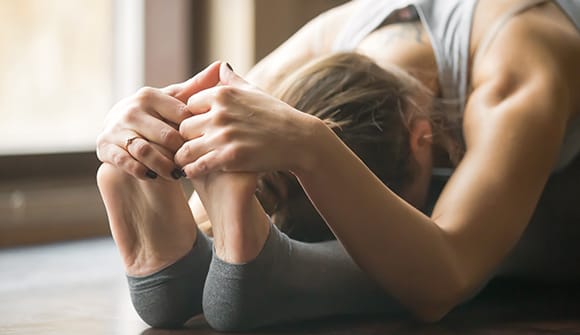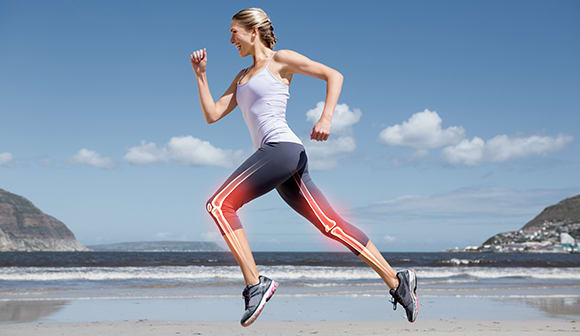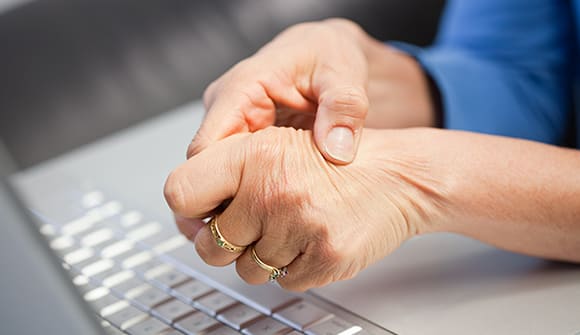How to keep joints lubricated
Motion is lotion for your joints. The more you move, the better.
Article Date:

Your joints are designed to let you bend, twist and turn easily, within certain limits. The ends of your bones are covered with a layer of cartilage to cushion your joints and help spread the pressure you put on your joints during daily movement. Surrounding the joint is a capsule that holds a thick liquid (synovium) that lubricates the joint.
8 easy ways to improve joint lubrication and health
If you've ever felt a little creaky after sitting in the same position for more than two hours, you've tested your body's lubricating capabilities. Your joints' lubricating fluid allows your joints to move with more ease and less stress.The more you move, the more lubrication moves through your joints.
Orthopedic experts shared some simple ways to move more and keep your juices flowing while staying active:
1. Warm up and drink up!
To activate those juices, start your exercise routine with a gentle 5-10-minute warm-up and gradually increase your effort. Another good way to self-lube is drinking more water.
2. Stretch regularly.
Daily exercise when coupled with regular stretching multiplies the effect on joints. Stretching opens blocked blood vessels and arteries to better blood flow, which leads to healthy joints. Stretching also removes stiffness and makes you more flexible.
3. Strength train.
Joints need protection. Your muscles, tendons and ligaments are designed to protect your joints. If they're weak, they can't do their job. A good way to build strength is through a training program designed by a physical therapist or personal coach, with your needs in mind.
While you find a trainer, you might take a class or exercise to a video. The important thing is to be proactive and establish a regular exercise routine to help you avoid loss of strength and protect your joints.
4. Give a little TLC.
Joints need tender care. Trying to lift too much weight, overtraining, too much repetitive action, or just doing too much, will put a strain on your joints. Learn to listen to your body. We need to keep moving while being mindful about how we move and never push past joint pain.
5. Cross-train.
You don't have to be an athlete to learn to mix it up. This is just a fancy way of saying we should focus on more than one single activity. By cross-training — doing a mix of sports or activities you enjoy — you avoid the kind of single-sport repetitive motion that can cause joint problems over time.
Changing your movement helps you develop muscles in areas untouched by your primary activity, and strong muscles help stabilize and protect your joints. If you're not sure where to start, try gentle yoga. It's an excellent way to keep your joints strong and flexible.
6. Lose weight.
The more weight you carry, the more stress to your joints. Every pound you lose equates to four pounds less pressure on your knees. Talk to your doctor about a good plan for you. Eat fresh, whole foods prepared at home in modest amounts, include lots of fruits and vegetables, and less sugar. Read Move It to Lose It.
7. Take a warm shower or bath.
Warm water will ease pressure on joints and muscles. A nice warm bath can do wonders for alleviating joint pain in your knees and hips. Immerse the affected area in the water and massage it to stimulate blood flow.
8. Get your ZZZs.
Giving your joints appropriate rest is good for maintaining their health. Are you getting about eight hours of sleep a night? During the day, it's okay to take a break to relax and alleviate stress on your joints. Adequate rest takes away muscle fatigue after workouts as well.
Tired of joint pain? We can help
Speak with your primary care physician, who can perform an initial assessment and make a referral to an orthopedic specialist, if needed. To find the right provider for you, call 904.202.4YOU(4968) or fill out the appointment request form.
Frequently Asked Questions
This story was originally published in May 2018.



